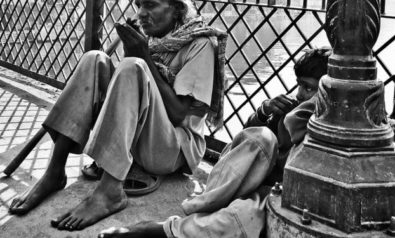The tragic rape and death of the young female student in New Delhi might mark a turning point for India over crimes against women.
Background
On 16 December, a young 23-year old medical student was gang raped on a bus in close vicinity of the President House in India’s national capital, New Delhi. She was apparently beaten badly as was her male companion, and her violators tried to kill her by trying to run her over with a bus. On 30 December, the victim died as a result of her injuries.
Delhi is seeing an increase in crimes against women. It is referred to as the rape capital of India with 635 cases of rape reported between January and November 2012. Pervasive corruption has led to the collapse of law and order. Government officials have been robbing the exchequer with impunity and the amount of money involved in Indian scandals has been increasing exponentially. A subservient police and pliant judiciary safeguard the interests of those in power. Such is police incompetence that while the six men were raping their victim, their bus was driven around for more than an hour and passed three police patrol vans. That someone can be raped next to the President House with impunity has proved to be a tipping point for India to finally look at itself in the mirror and rise up in revolt.
Why are Crimes Against Women Important?
It is not just the government that is at fault. India has a long history of discrimination against untouchables, lower castes and women. The gender ratio is skewed because of selective abortion and female infanticide.
Female fetuses are often aborted and baby girls killed after birth, leading to an appallingly skewed sex ratio. Women who survive frequently face discrimination, prejudice and neglect all their lives. Crimes against women are rising fast with 24,000 rape cases reported across India in 2011; a rise of 9.2% over 2010.
It is important to remember that only a fraction of rape cases are reported because of the intense social stigma any victim faces. The threat of further violence and even death further discourages reporting of such cases because perpetrators are often powerful and well connected, while the victim is poor and weak. Despite this systemic statistical bias that tends to underreport crimes against women, the figures have been going up for all categories from molestation to murder, kidnappings to trafficking, which increased by a spectacular 122% in 2011.
The systemic social discrimination against women leads to “more than two million women in India” going missing every year. Poor diet, lack of healthcare and violence prove to be a fatal cocktail. TrustLaw, a Thomson Reuters Foundation Service, estimates that India is the worst G20 country to be a woman; worse than even Saudi Arabia.
At the same time, India has more female leaders than the US. Sonia Gandhi, the Italian widow of the Nehru family who runs the country, and Sheila Dikshit, the Congress leader who has been in power since 1998, are both women. Ms Dikshit actually gave parole to Manu Sharma, convicted of murdering Jessica Lal in November 2009, presumably because he was the son of a senior leader in her party. The fact that even female leaders do not care about women’s issues makes India unique. In India, identities are forged through families, castes and communities. Women in power who can push through change tend to protect their errant boys because they do not feel any empathy for the average woman. Their cocooned lives with servants, bodyguards and fawning entourages makes them as corrupt as their male counterparts. In turn, the million tragedies in this nation of over a billion continue.
This rape might mark a turning point for the country. A couple centuries ago, Indian philosophers and social reformers began a campaign to root out the pernicious custom of sati, in which a widow would be burnt on the pyre of her husband. The outrage and protests that have followed the tragic rape and death of the young medical student might just be the tipping point when India becomes serious about tackling crimes against women.
For more than 10 years, Fair Observer has been free, fair and independent. No billionaire owns us, no advertisers control us. We are a reader-supported nonprofit. Unlike many other publications, we keep our content free for readers regardless of where they live or whether they can afford to pay. We have no paywalls and no ads.
In the post-truth era of fake news, echo chambers and filter bubbles, we publish a plurality of perspectives from around the world. Anyone can publish with us, but everyone goes through a rigorous editorial process. So, you get fact-checked, well-reasoned content instead of noise.
We publish 2,500+ voices from 90+ countries. We also conduct education and training programs on subjects ranging from digital media and journalism to writing and critical thinking. This doesn’t come cheap. Servers, editors, trainers and web developers cost money.
Please consider supporting us on a regular basis as a recurring donor or a sustaining member.
Support Fair Observer
We rely on your support for our independence, diversity and quality.
Will you support FO’s journalism?
We rely on your support for our independence, diversity and quality.













